Nathan Mason navigates curatorial practice for the Chicago Cultural Center while maintaining healthy investigations in ceramics and decorative arts. In a recent visit to his Ravenswood studio, The COMP Magazine looked at and discussed his ongoing organic figurative ceramic works, strategies for working with area artists on public exhibitions, and how the fine arts has taken over all areas of his daily life.
You are a practicing artist/ceramicist and a Curator of Exhibits and Public Art at the Department of Cultural Affairs for the City of Chicago. Can we start with you describing how you juggle these two practices?
I have a full-time day job with the City, which also creeps into off hours and weekends. On average I go to the studio two or three nights a week and at least one weekend afternoon. I’ve become a bit of a hermit in going to work, going to studio, going to sleep, repeat cycle. I also do my best to retain an artist’s perspective in my bureaucratic dealings to try and figure out creative ways to resolve issues.
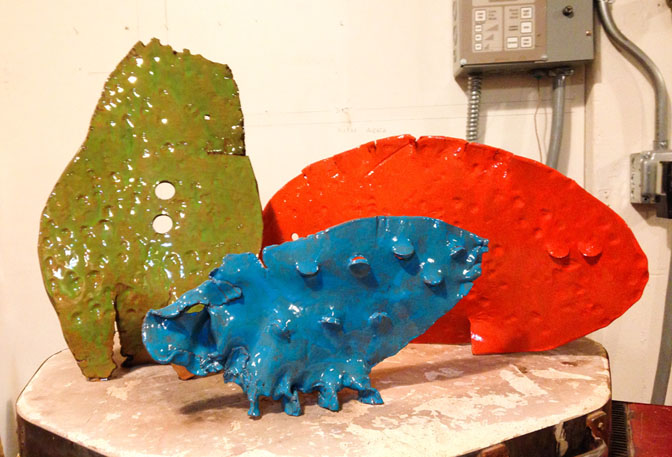
Nathan Mason, Family Grouping, 2014-15, terra cotta, cone 04
While visiting your Ravenswood studio, I noticed numerous small organic, and at times figurative, fired ceramic pieces lining almost every available space. Is there a specific focus, title or intent for these works? Can you describe the process?
The small organic vaguely figurative pieces are exactly that. For me they are similar to doodling on paper. I began making them with the scrap clay after a throwing session. I now make them as a focus of their own. I am also seeking to scale them up from being just palm sized. What piques my interest in this type of making is playing with anthropomorphic or zoomorphic forms, seeing what can be suggested by very loosely modeled clay. I am fascinated with pre-historic objects and other ancient forms. This interest carries through into my “Urban Forms” photo series I post on Facebook. The clay forms I call squeezimals – I think the derviation of the name is fairly obvious. I’ve branched into a related series I call slabbies – which is working with a single slab to create a suggestive freestanding object. I like the various references that these simple objects evoke.
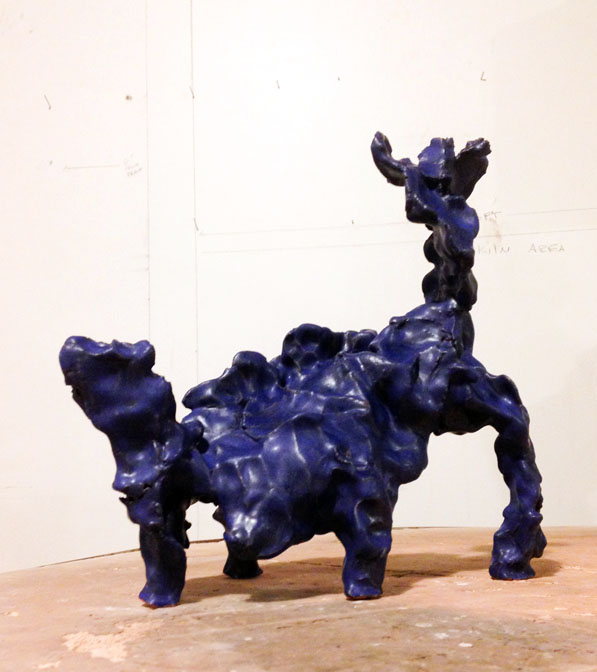
Nathan Mason, Bessie, 2014-15, terra cotta, cone 04
Are there any artists, artworks, philosophy or writings that you see influencing your art making practice?
Beatrice Wood, Ruth Duckworth, Gertrude Abercrombie, Lissy Funk, George Ohr, the Natzlers, commercial mid-century design, anonymous ancient craftspeople, cave paintings, Angry Birds, Eric Gill, the Jomon potters, Johann Joachim Kaendler, Johann Friedrich Bottger, Hannah Hoch, Kurt Schwitters, Hieronymus Bosch, Joachim Patnir, Rogier Van Der Weyden, Louis Kahn, Lino Bo Bardi, Bernini. There are more. It is a bit of a stew.
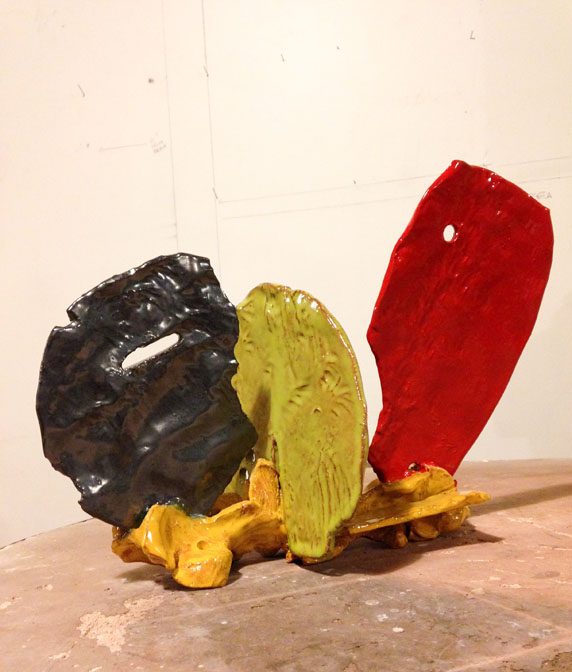
Nathan Mason, Untitled, 2014-15, terra cotta, cone 04
You’ve been traveling and looking at a lot of art lately. I’ve noticed a wide range of interest (decorative ceramics from the 18th c., Byzantine bowls and dishes, and cruciform’s from a variety of periods) from trips to NYC and beyond. What role do these encounters have in molding your curatorial or aesthetic approach?
My travels help to expose me to several things – new ideas and work which I haven’t yet seen in Chicago, refreshing visits to old “friends” in museums around the country, and the random experiences of travel which remind you why being present in the moment is a good way of being. How do they effect my curating or artmaking? By stimulating me to embrace new things and/or to rethink existing relationships or attitudes to art/artists/ideas I already have established.
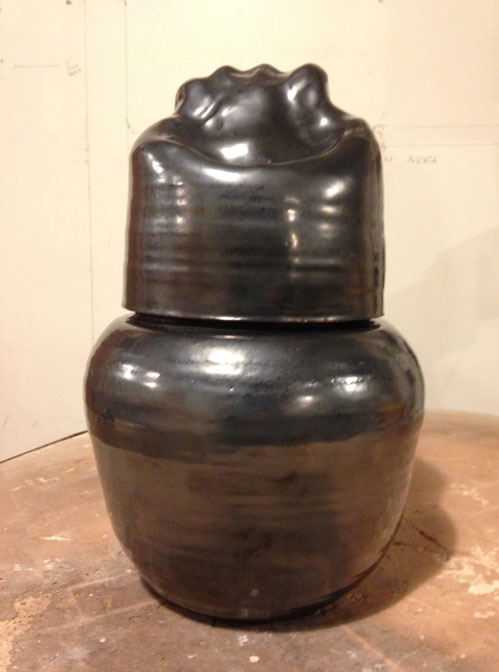
Nathan Mason, Cinerary Urn, 2014-15, terra cotta, cone 04
As a curator, do you have a specific mission that is embedded in your curatorial approach? How do you plan your exhibitions? Are there specific items that you hope to convey to the Chicagoland viewing public?
Curatorially I work mostly in two ways either directly with artists for one person exhibitions or commissions or developing a group show. If I am working one on one my focus is to help the artist produce the best possible exhibition or commission. In the one on one it is really about what is my role in assisting the artist. In putting together a group show since it is not about one artist the goal is to achieve an harmonious whole which highlights all participants in the best possible way while presenting a coherent experience to the general public.
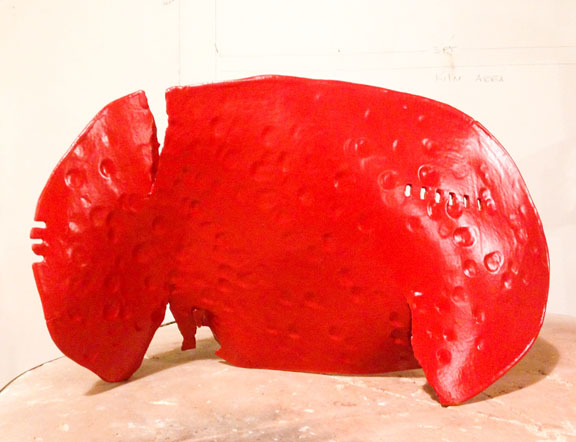
Nathan Mason, Theodore , 2014-15, terra cotta, cone 04
What do you have planned for 2015?
This year I am looking to further my studio work with more frequent critical conversations in my studio with other artists and critics I’ve been pretty solitary for the most part and want to have more input. For the “day job” I am developing some long range exhibition ideas, working on bringing a few slowly moving projects to completion and beginning some new commission projects with my colleagues.
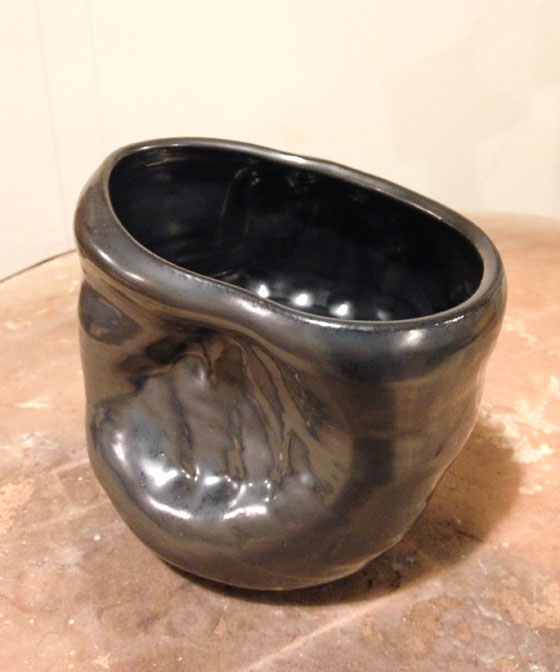
Nathan Mason, Untitled Vessel, 2014-15, terra cotta, cone 04
Nathan Mason is Curator of Exhibits and Public Art for the Department of Cultural Affairs & Special Events. He obtained a BA in Art and Art History from the University of Dallas and has done further studies at the University of Utah and the University of Chicago. Duties for the City of Chicago include curating the City Gallery in the Historic Water Tower, the Chicago Cultural Center, various outdoor scattered-site installations and Percent-for-Art commissions. Projects include the Open Studio residency program (2003 – 2009), Paint Paste Sticker: Chicago Street Art (2013), Officially Unofficial: Inspired Art for Obama (2009), Niki in the Garden at Garfield Park Conservatory (2007), Allstate Artists and Automobiles (2006), Art in the Gardens (2004), Suite Home Chicago (2001), Cows on Parade (1999) as well as being public art project manager for the Haymarket Memorial, the new Maxwell Street Market and the 606/Bloomingdale Trail.
He maintains his own art practice and has exhibited at the Hyde Park Art Center, Rhona Hoffman Gallery, NAME, and RX Gallery (Daniel Hug’s Chicago gallery), among others. He has curated numerous independent projects for spaces ranging from Beret International to Margin, his own short-lived apartment gallery. The Butter Show in 1999 garnered international media attention. He sat on the exhibition committees of Randolph Street Gallery and Gallery 312 and currently is a member of the Oriental Institute Museum’s temporary exhibition advisory group.
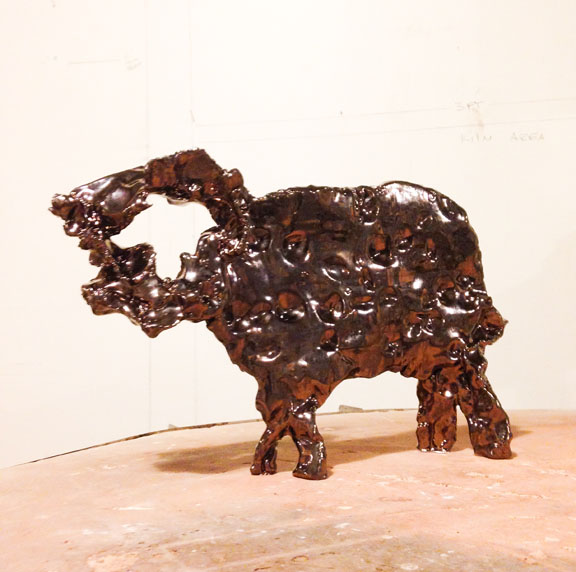
Nathan Mason, Isaac , 2014-15, terra cotta, cone 04
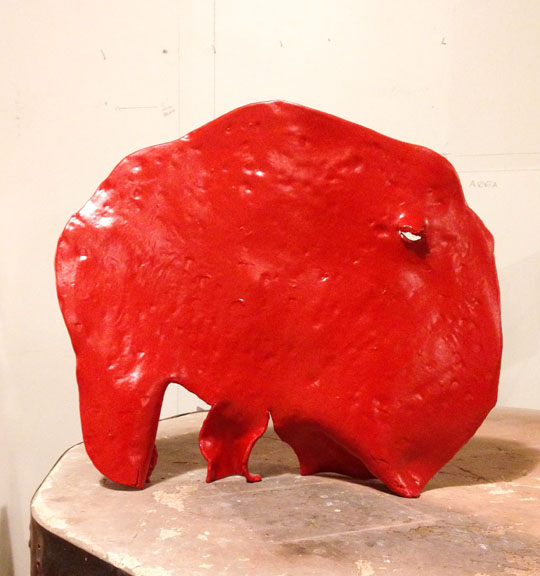
Nathan Mason, Eric , 2014-15, terra cotta, cone 04
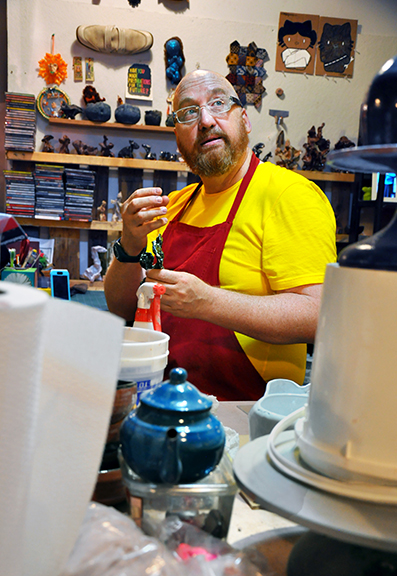
Nathan Mason, ceramicist, Chicago, 2014
Interview and portrait by Chester Alamo-Costello


